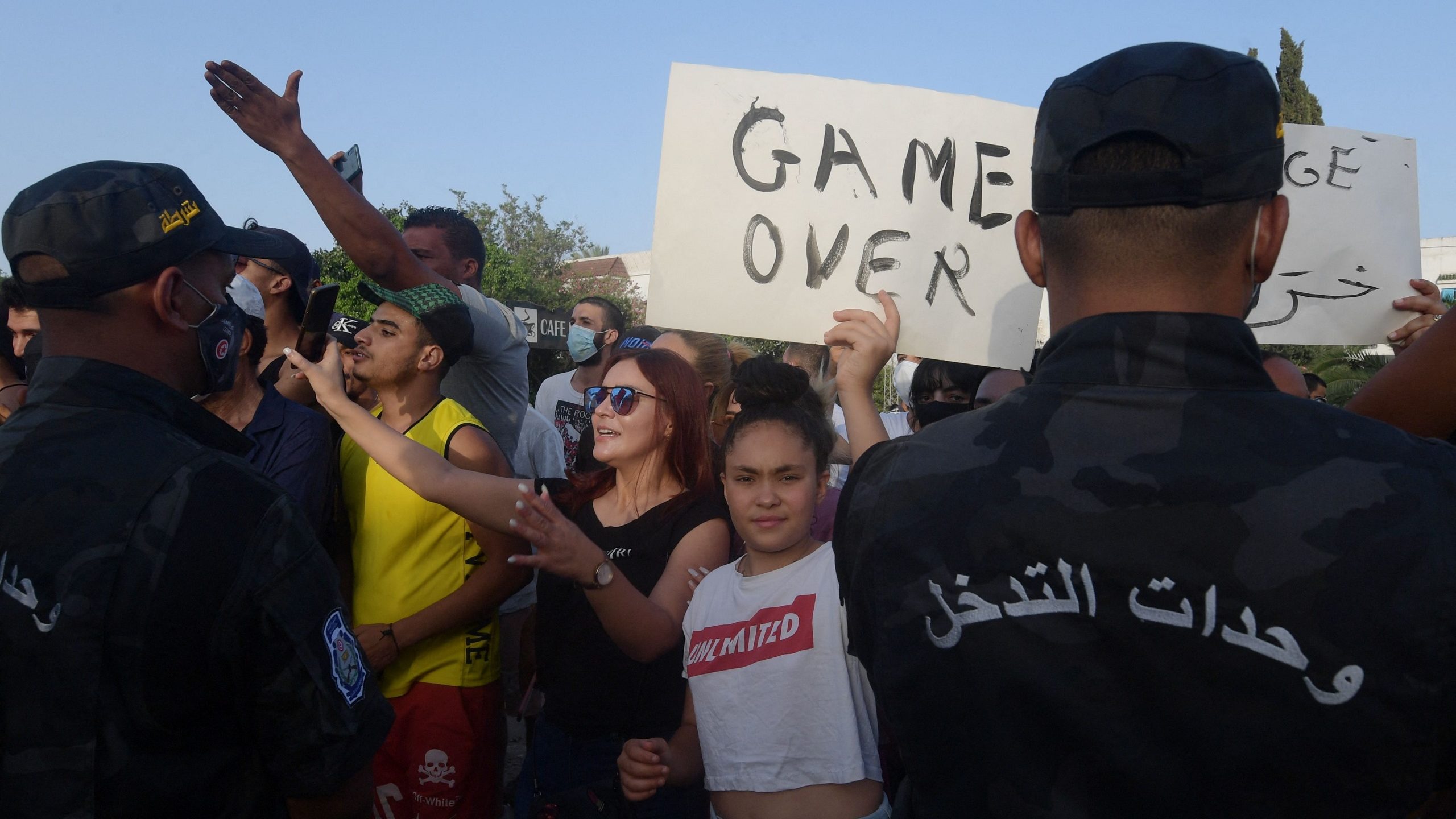Tunisia 2021 and Egypt 2013
Al-Ittihad, UAE, August 13
The developments that have taken place in Tunisia since the outbreak of the widespread popular demonstrations against the Ennahda Movement aren’t entirely surprising. On July 25, a large group of Tunisians celebrated the 64th anniversary of the republic in a different way: they took to the streets and squares and protested against a movement that has lost its legitimacy and maintained its control over Tunisia despite only enjoying a meager majority in parliament (52 of 217 members). This crisis was getting worse day by day. Warnings of the seriousness of the situation and its potential consequences also grew with time. But the Ennahda Movement didn’t realize the outcome of their country’s deteriorating conditions, just as it didn’t understand its consequences. It remained entrenched in its positions and refused to do anything about the crisis that threatened Tunisia’s state institutions with complete paralysis. The deterioration of economic and social conditions, the weakening of the health system due to COVID-19, and political disputes threatened Tunisia with implosion. Interestingly, the positions of the Ennahda Movement in the days prior to July 25 were very similar to those of the Muslim Brotherhood in Egypt on the eve of June 30, 2013. The Tunisian movement didn’t learn the lesson of the Egyptian revolution and the ultimate collapse of the Brotherhood. Ennahda suddenly took a step back and had to demonstrate some flexibility when it realized that the Tunisian street was mobilizing against it. However, it soon returned to its original positions and entered a direct clash with Tunisia’s political institutions. This isn’t the first time that a Brotherhood offshoot has failed to learn the lessons of its sister organization. This was the case with the Brotherhood in Egypt, which was unable to absorb the lessons of its first clash with the government, which led to its dissolution in 1948. Three years later, it regained its legal status, which it maintained until it entered into a new clash with the government in 1954. After it seemed to many that the Brotherhood finally learned its lesson – when the late president Anwar Sadat brought it back into the political arena under specific conditions – it became clear that the Brotherhood mentality is hard on political realization. As soon as it came to power in 2012, its leadership thought that its takeover of the presidency was sufficient to achieve its ambitions, so it entered into a clash with several parties, and with the broader Egyptian public. And, today, the Ennahda Movement is following the same path, reproducing the experience of its mother group in Egypt, and proving that it is no different from other so-called political Islam groups, contrary to what some Arab and foreign scholars and analysts believed in recent years. – Dr. Waheed Abdul Majeed (translated by Asaf Zilberfarb)

